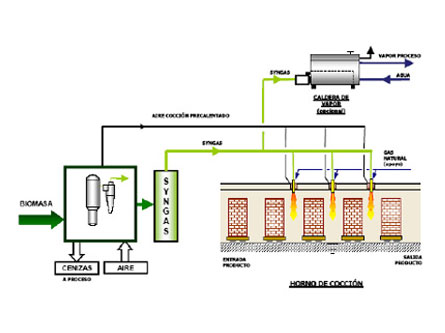News
New prototypes for syngas combustion (Dec 1, 2009)
Syngas, or synthesis gas, is a gaseous fuel obtained from biomass combustion. It is a low energy gas with less than 1,540 kcal/Nm3 in calorific power, composed mainly of monoxide, hyrdrogen, methane, nitrogen, carbon dioxide and water vapour.
One of the great advantages of using syngas is related to CO2 emissions. Currently in Spain a medium-sized ceramics industry with a production of 300 tonnes/day has around 18,000 CO2 emissions rights per year, with a current market value of 400,000 euros, a figure which will increase significantly in the future. The rights could be converted into income through the use of neutral fuel emissions such as syngas.
BERALMAR's R&D department is currently involved in a project for applying this fuel to the ceramics industry and has successfully developed the first prototypes, with a calorific output of up to 10,000 kcal/hr, soon to be be installed in a tunnel kiln.
It is another example of BERALMAR's committment to developing combustion equipment for any new fuel which is technically and economically viable.
+ info:
One of the great advantages of using syngas is related to CO2 emissions. Currently in Spain a medium-sized ceramics industry with a production of 300 tonnes/day has around 18,000 CO2 emissions rights per year, with a current market value of 400,000 euros, a figure which will increase significantly in the future. The rights could be converted into income through the use of neutral fuel emissions such as syngas.
BERALMAR's R&D department is currently involved in a project for applying this fuel to the ceramics industry and has successfully developed the first prototypes, with a calorific output of up to 10,000 kcal/hr, soon to be be installed in a tunnel kiln.
It is another example of BERALMAR's committment to developing combustion equipment for any new fuel which is technically and economically viable.
+ info:



